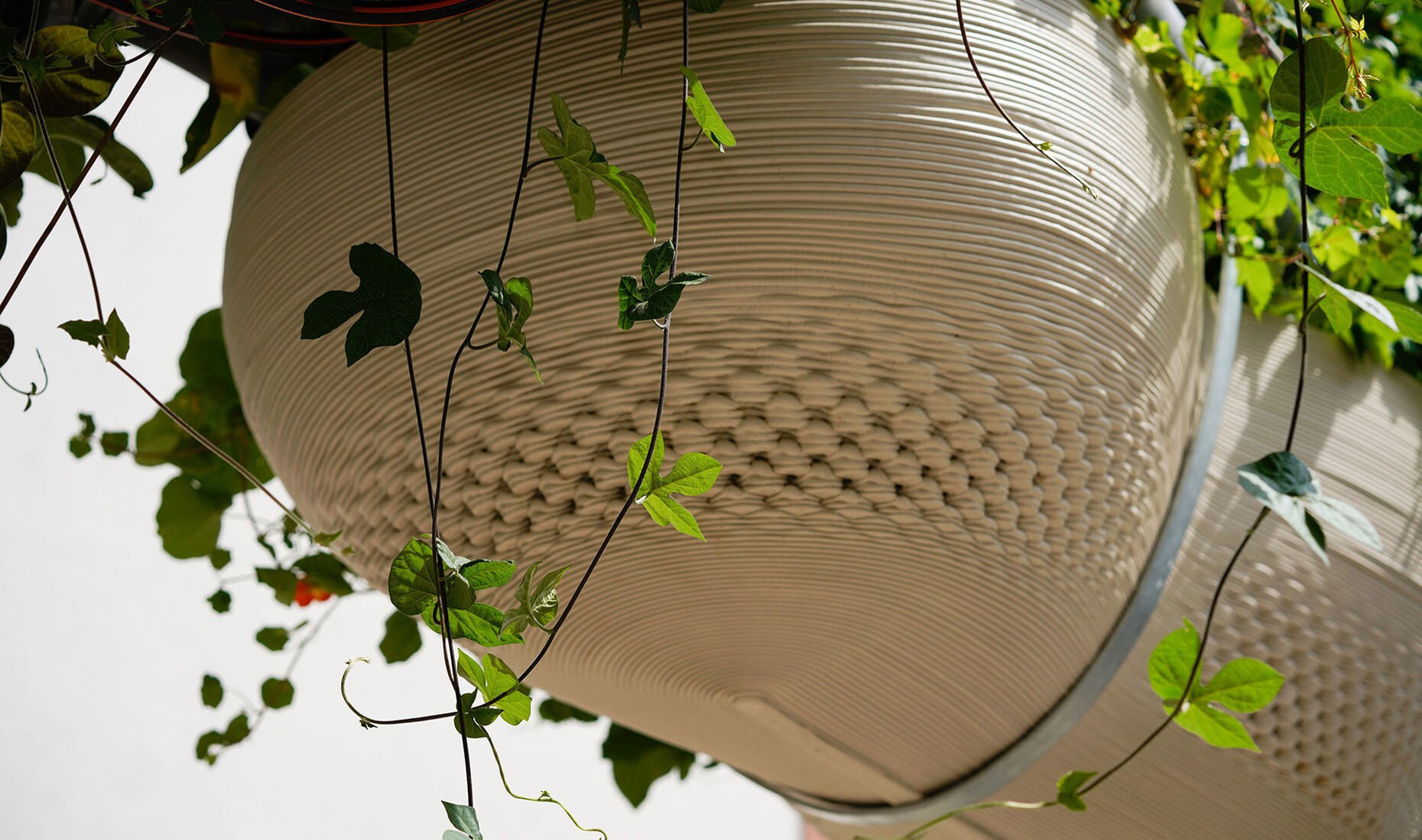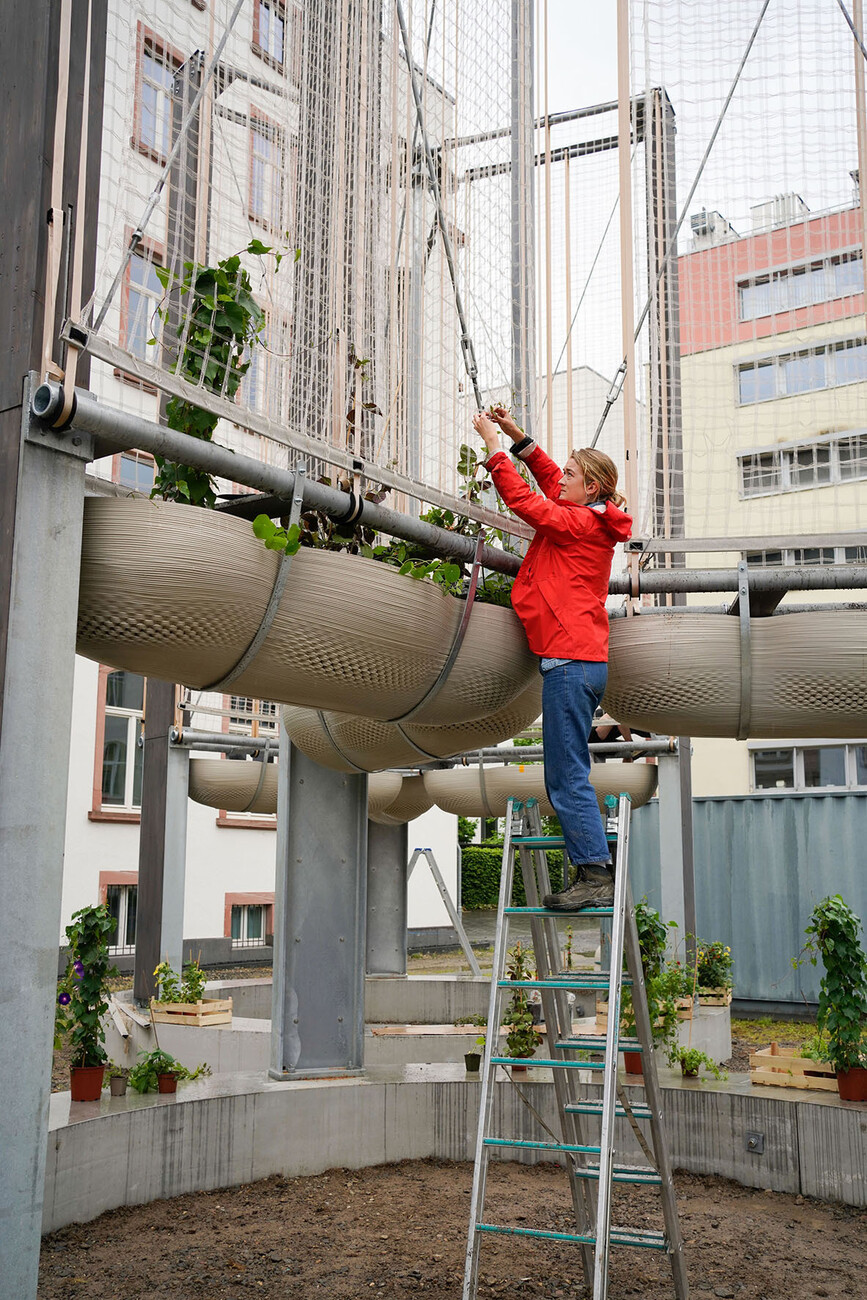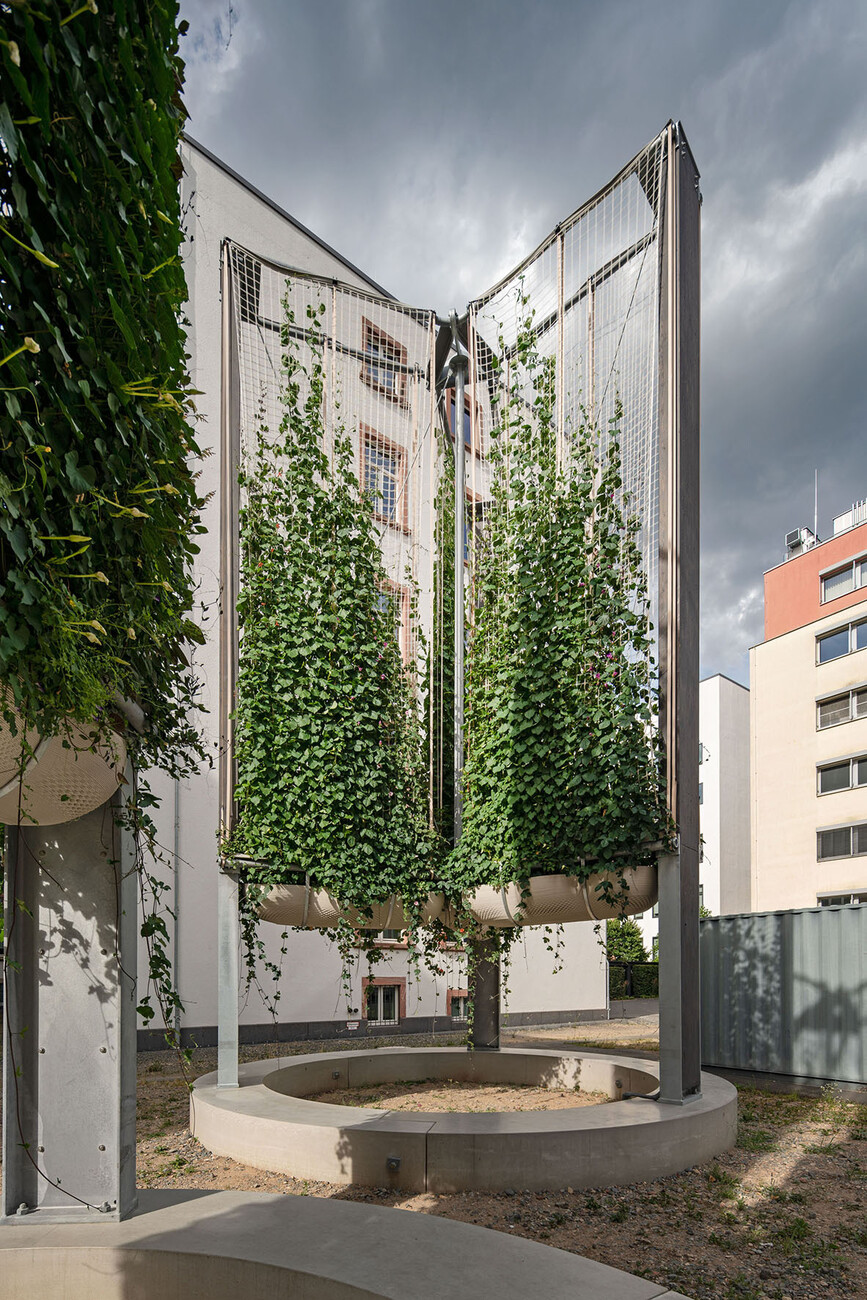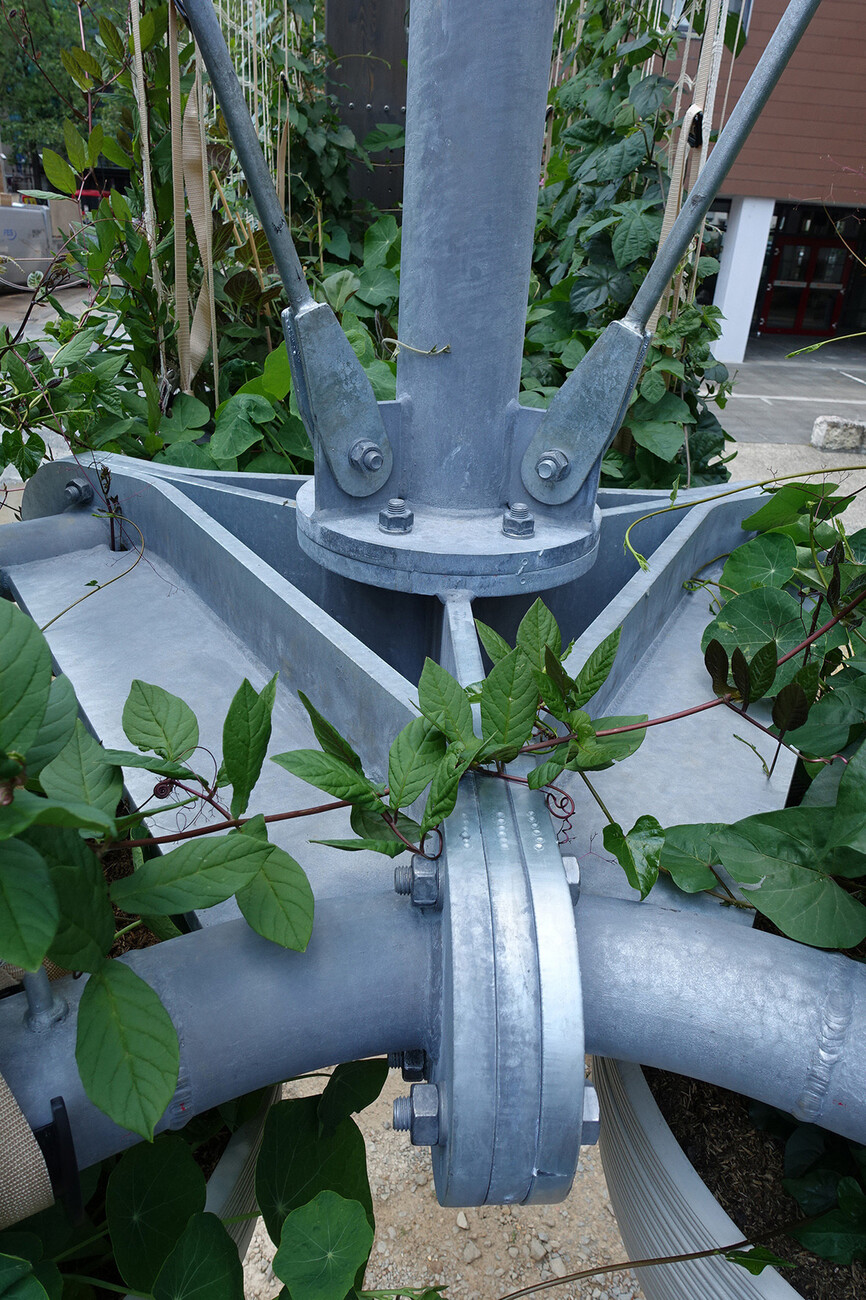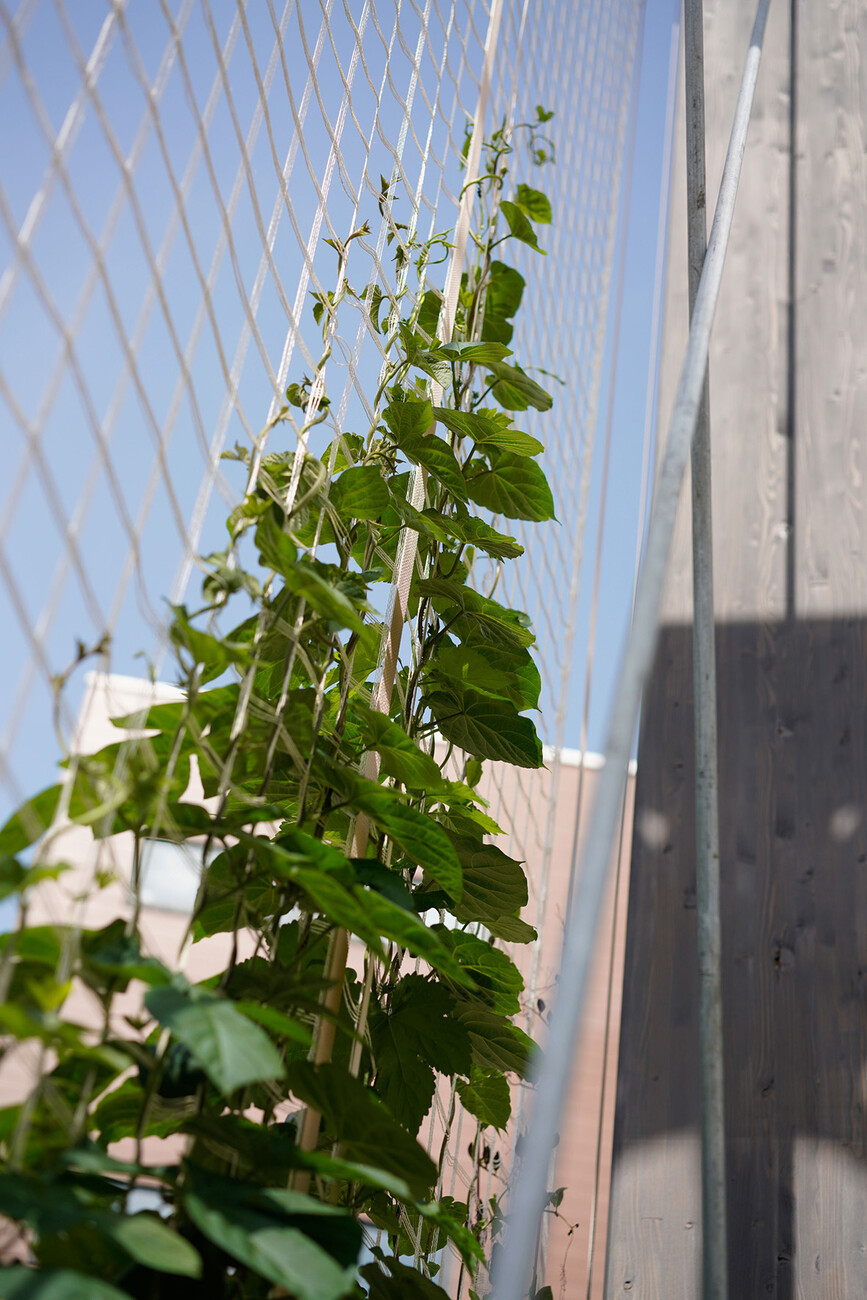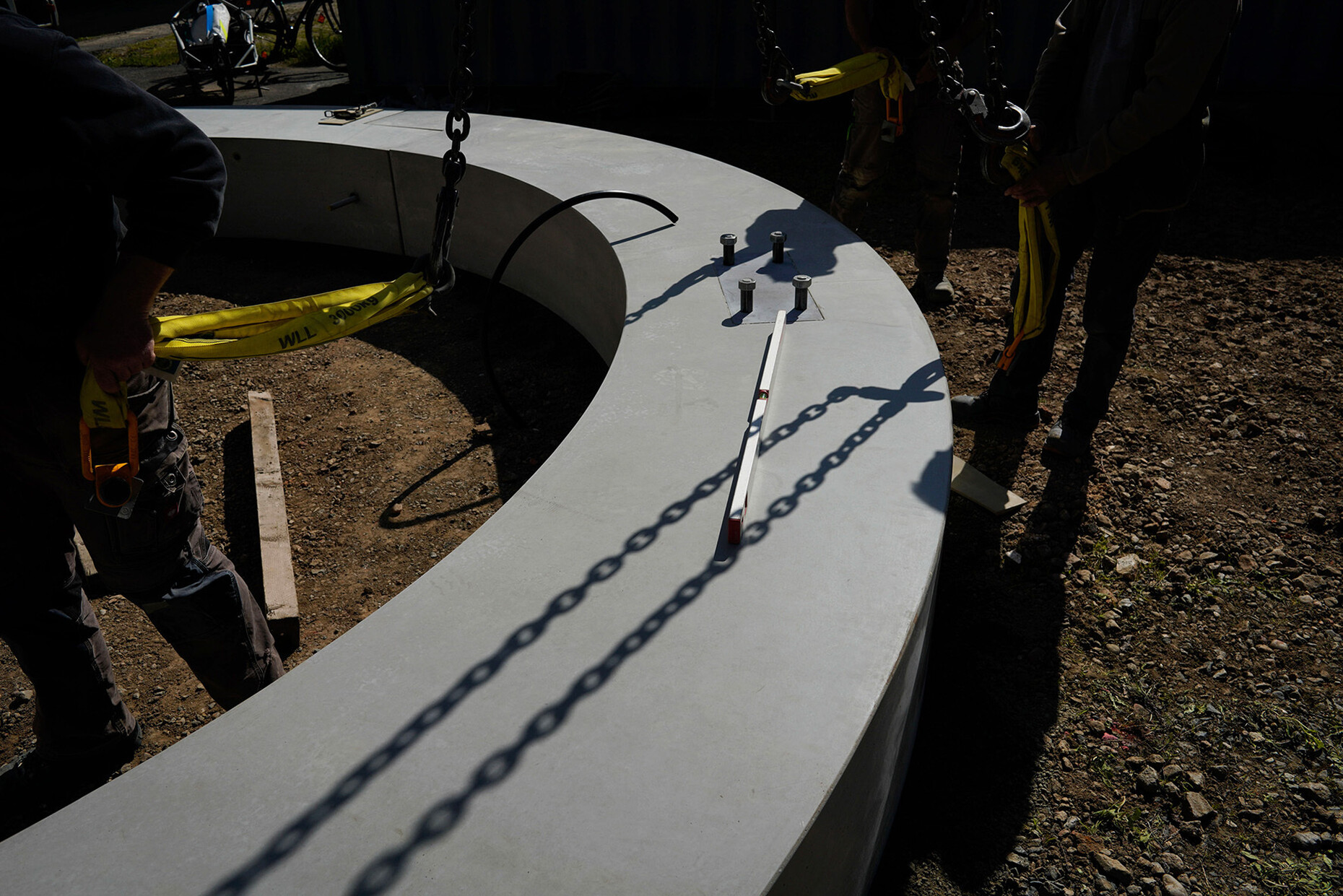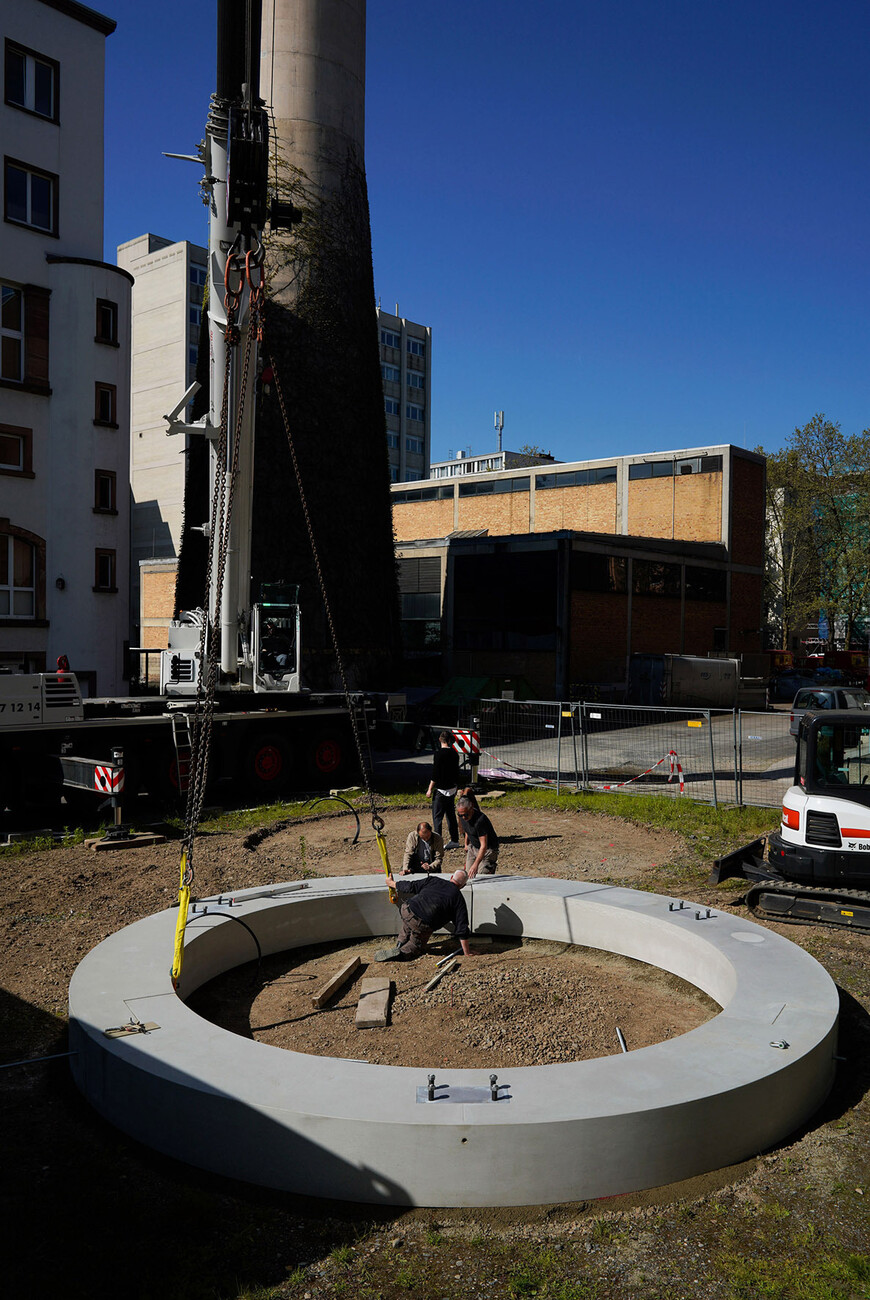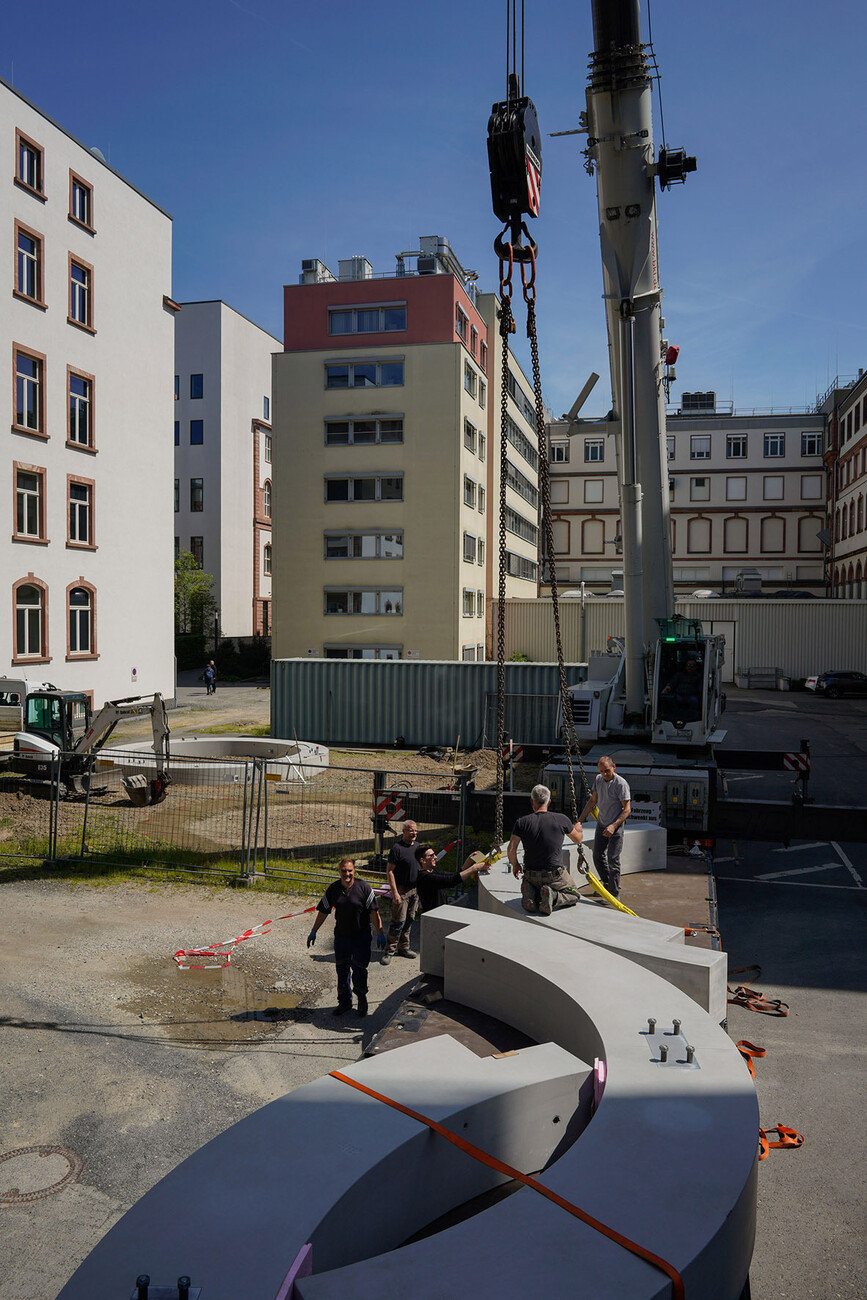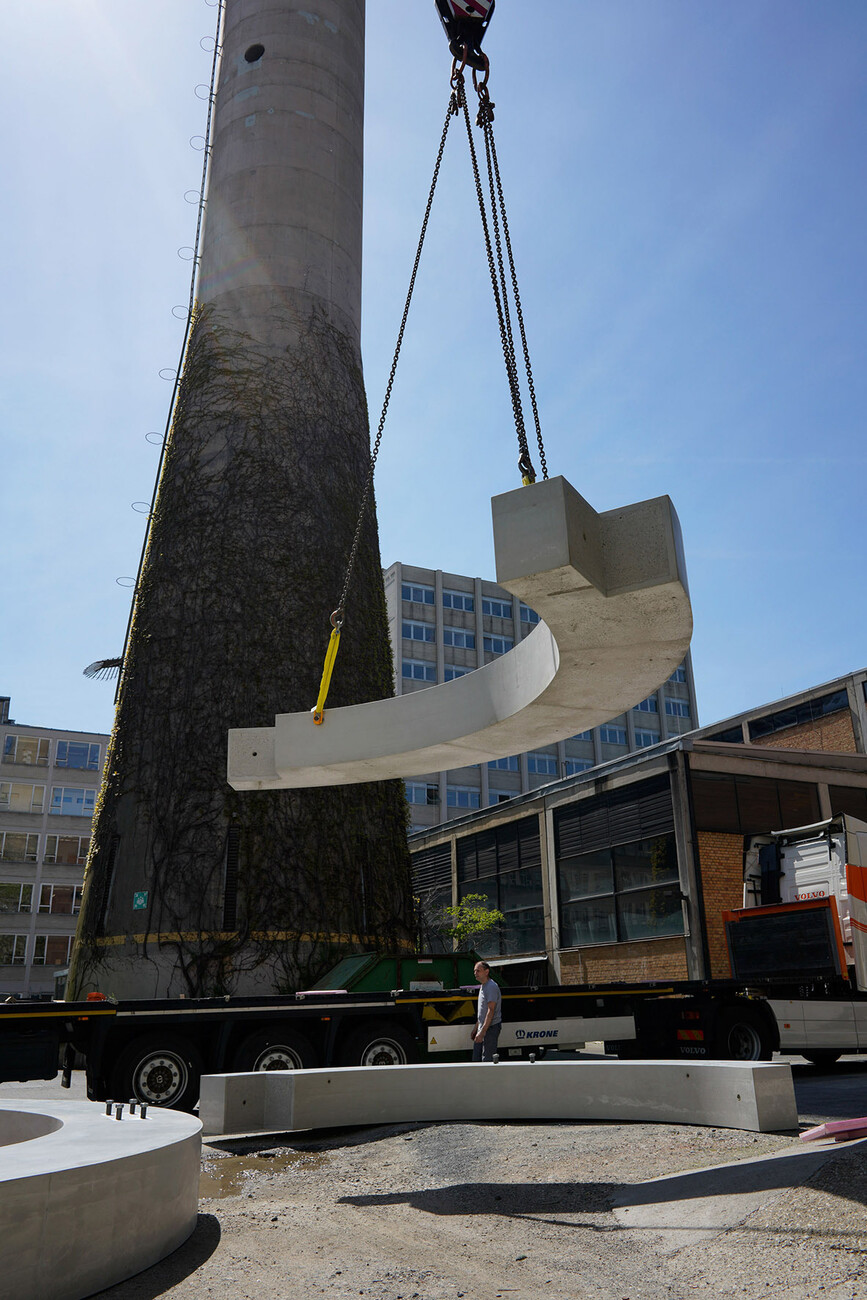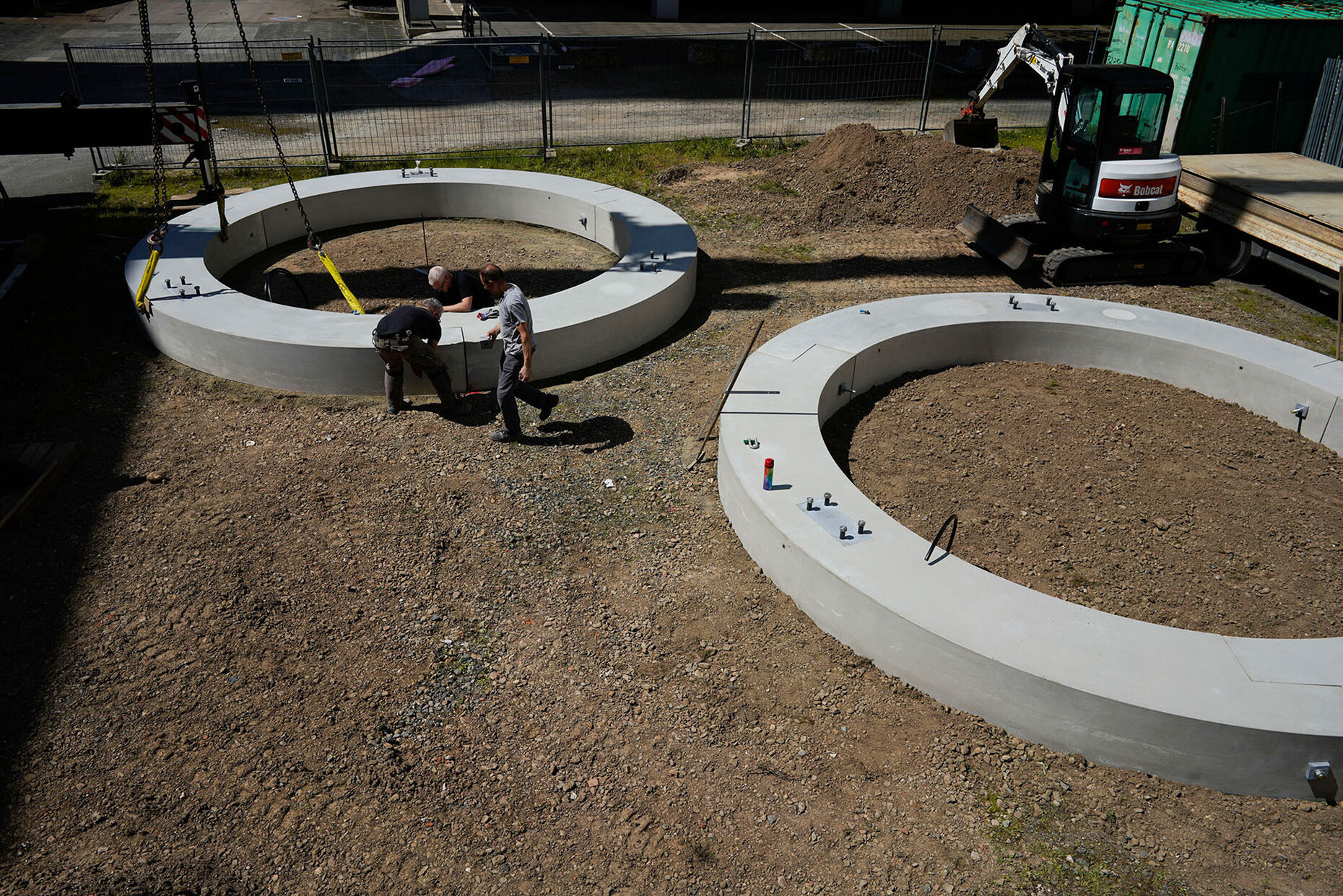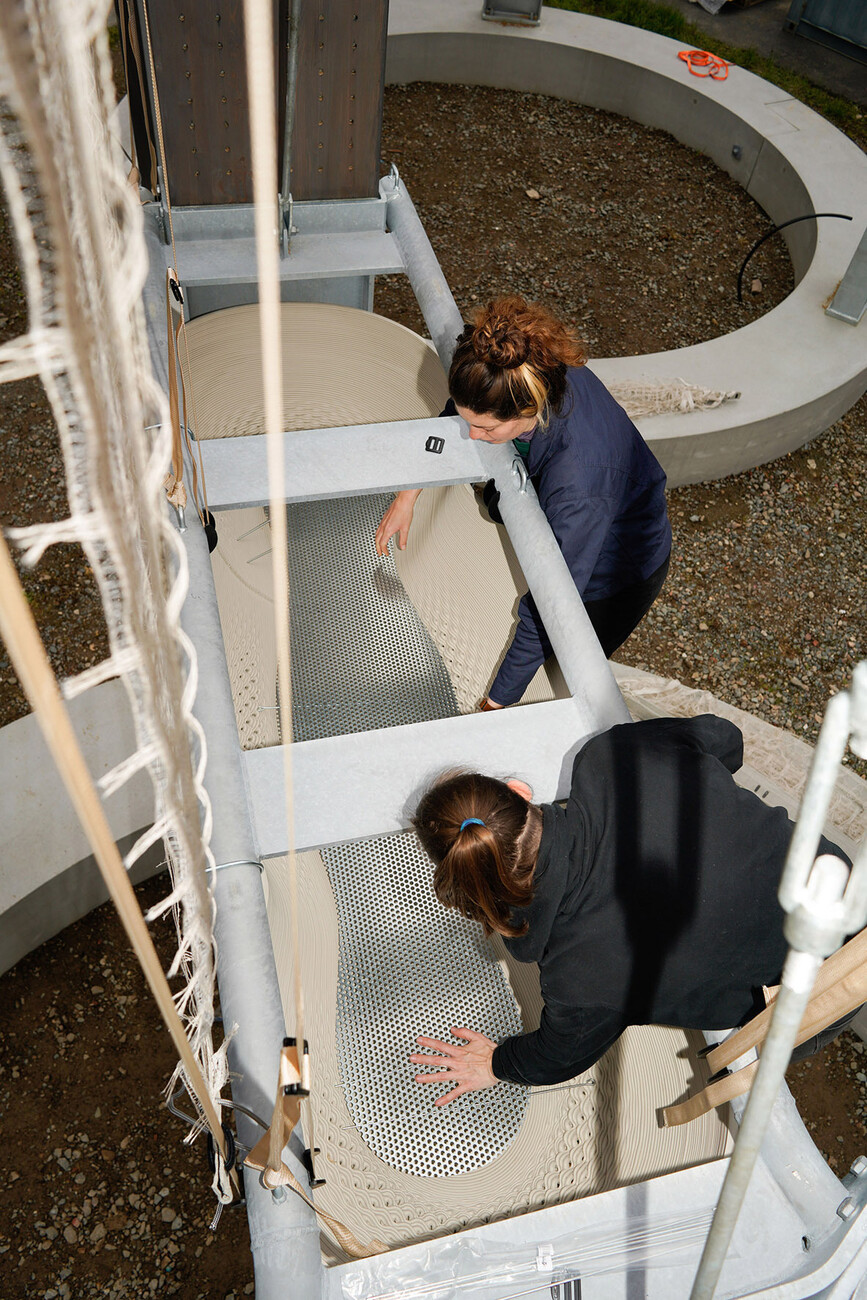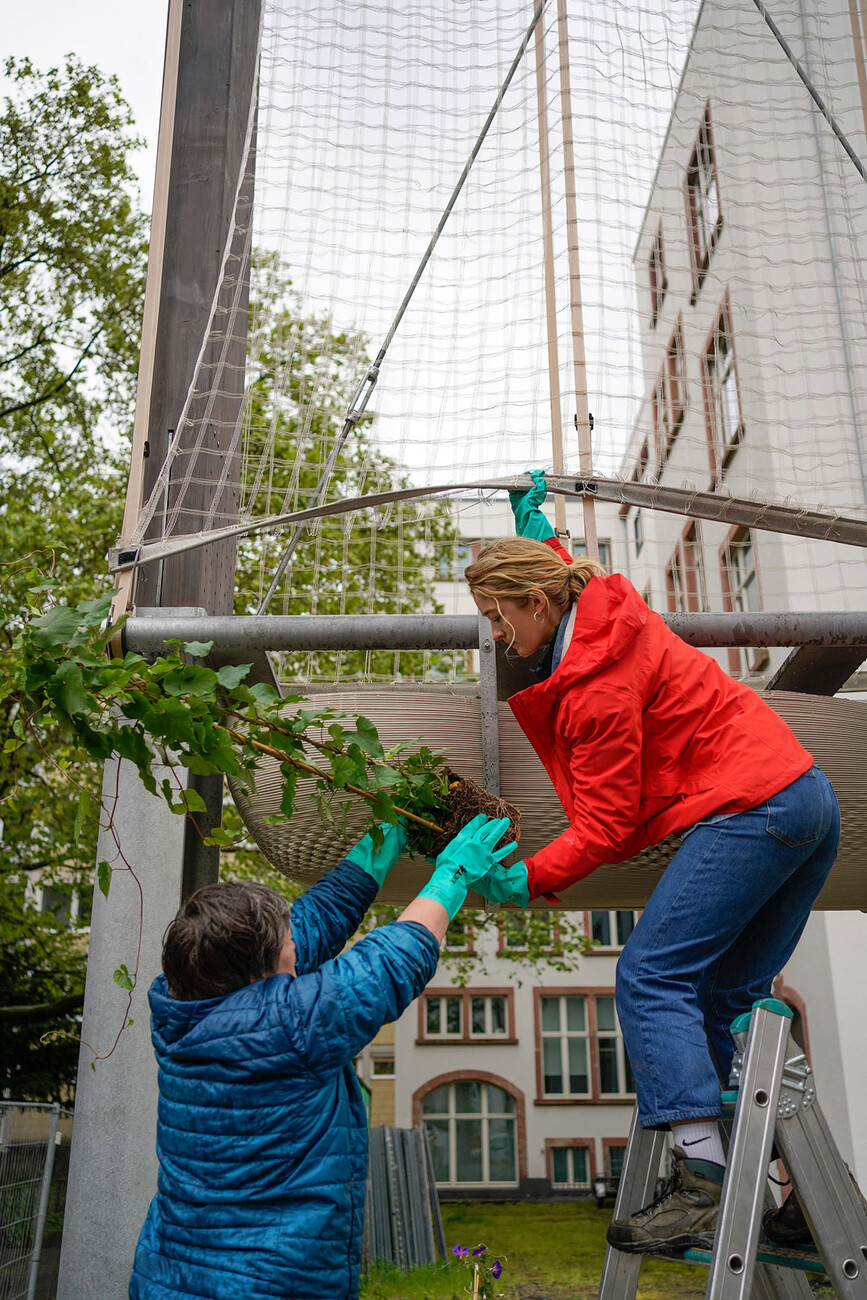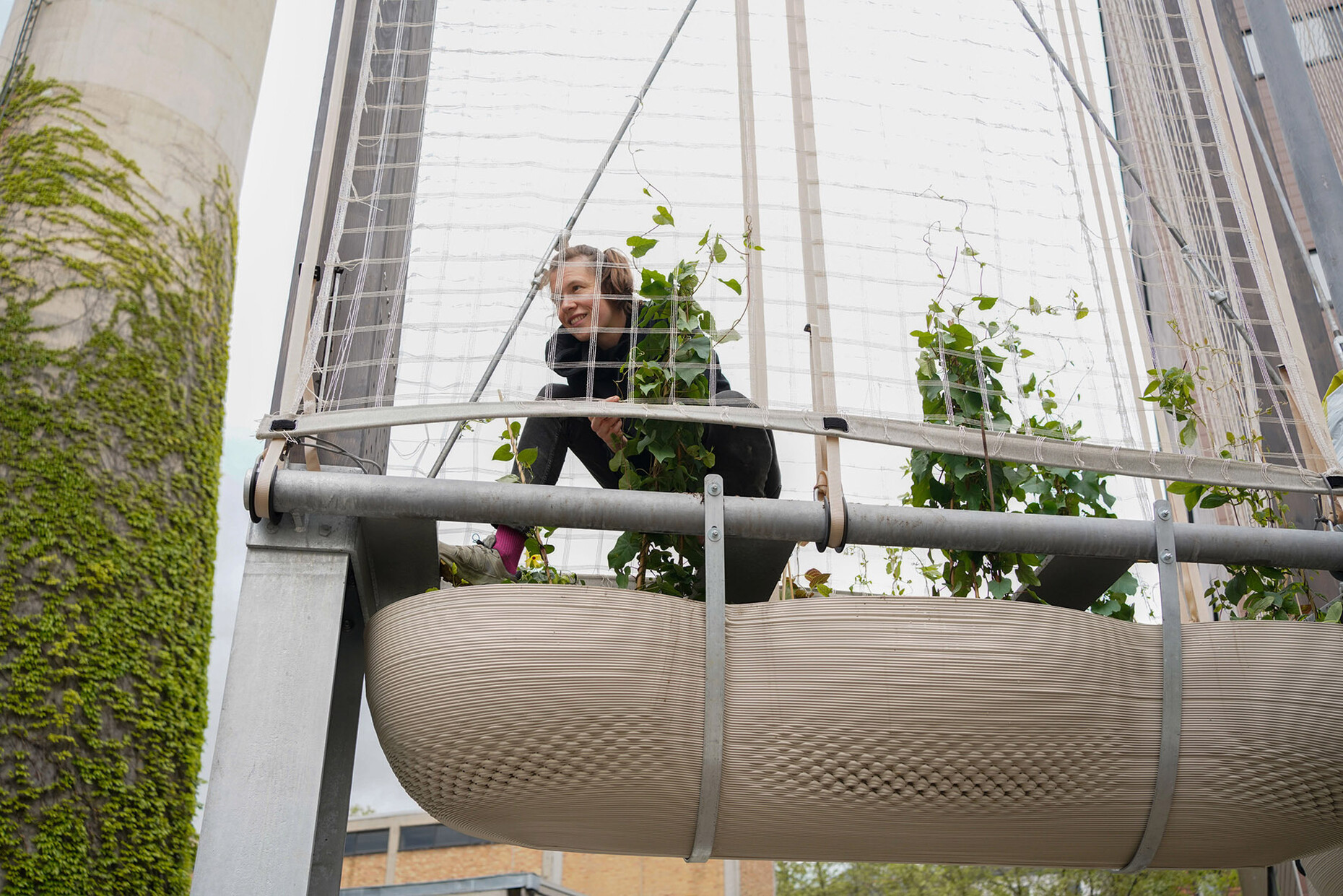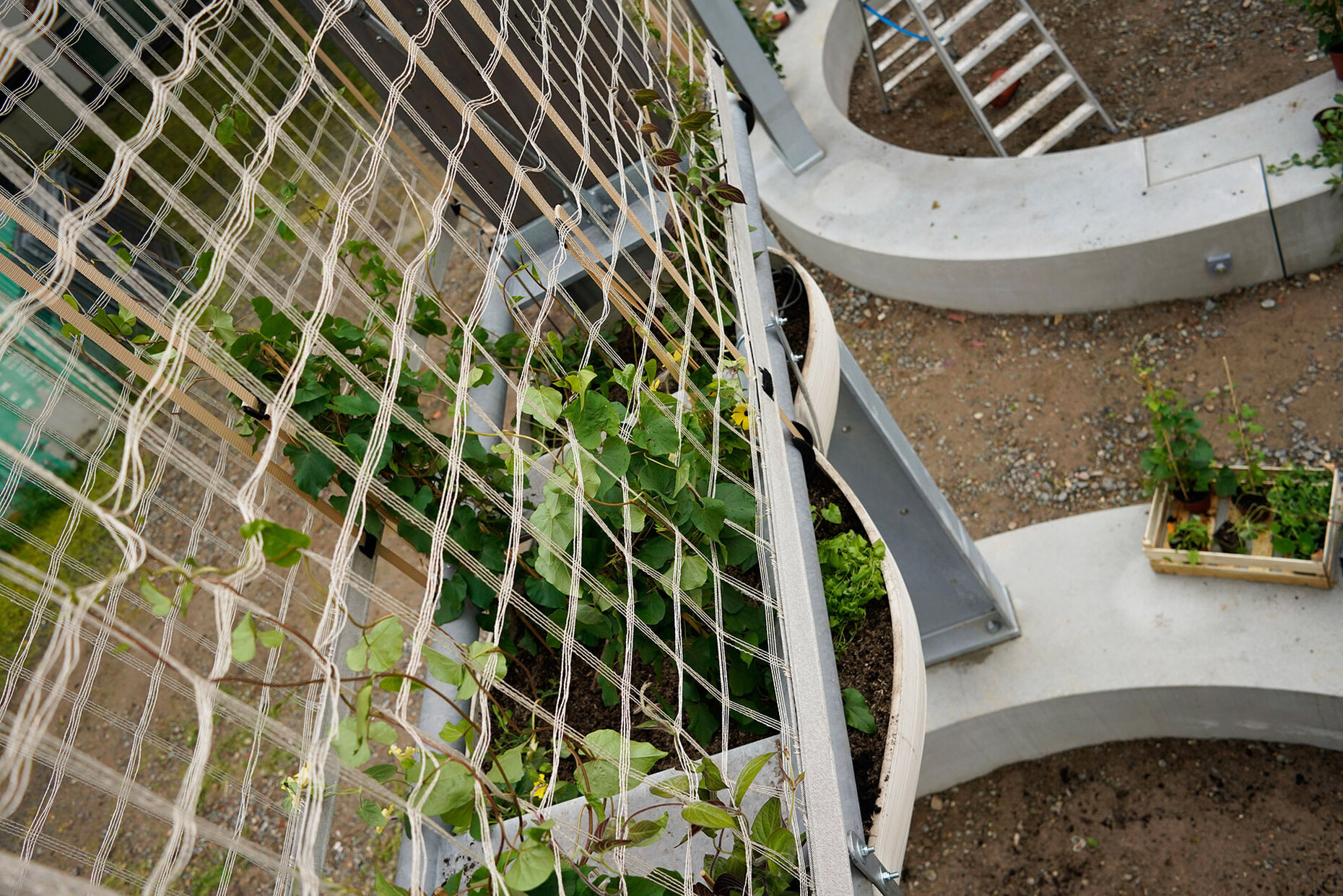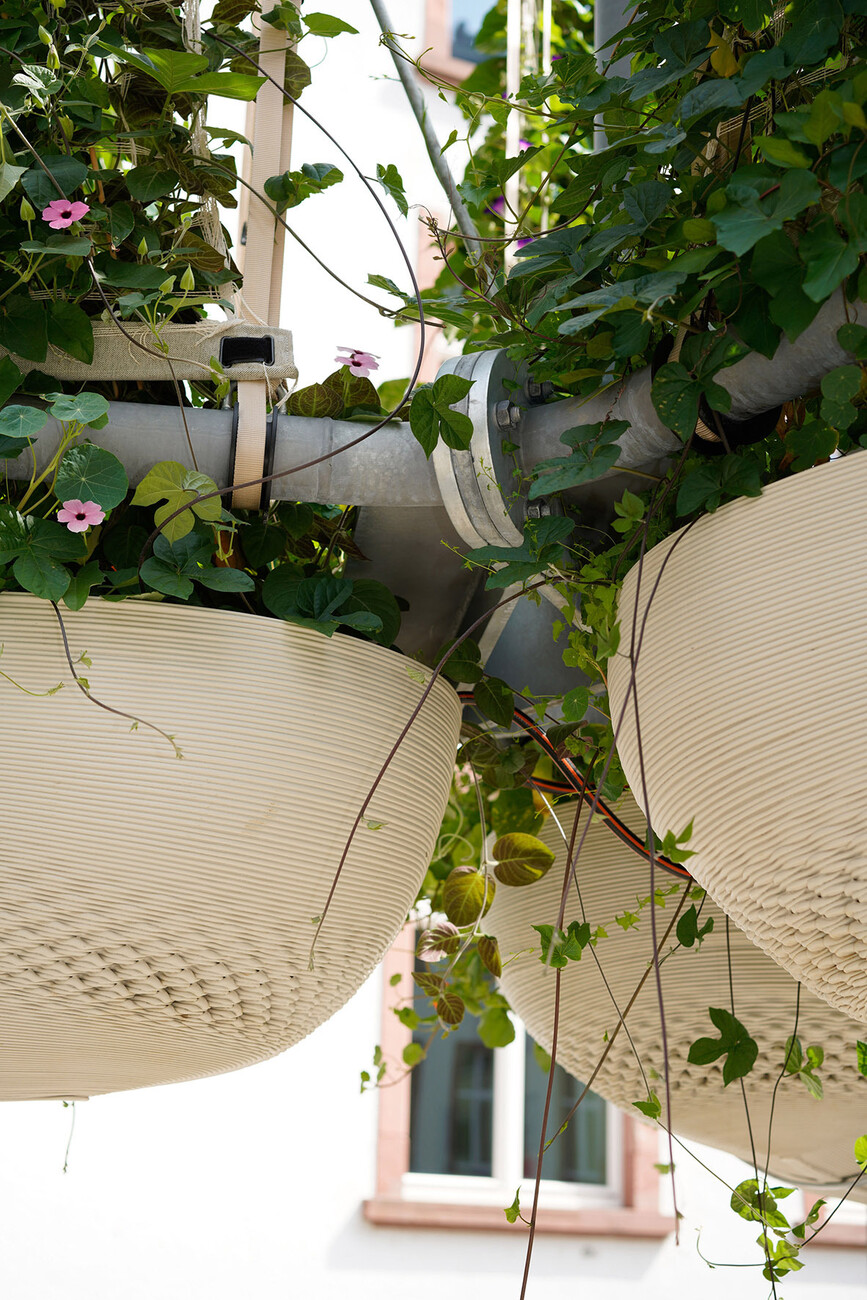SUSTAINABILITY
Shadow-Energy-Cycle
Extreme became normal. The recent past has brought record summers in Germany, Switzerland and Austria almost without exception. Temperatures of 33 degrees Celsius and above are no longer uncommon. Especially in urban areas with their many sealed surfaces, the heat accumulates. More shade is needed. But especially in streets and squares, it is often not possible to plant trees because of the numerous pipes, shafts and communication lines running in the ground. This is also not possible in underground car parks, where trees cannot take root. A rather radical vertical greening system for these locations has been developed by the Frankfurt Office for Micro Climate Cultivation, or OMC°C for short, in cooperation with designer Stefan Diez, the office Just Architekten and other partners: "VERD°System". In spring, fast-growing annual climbing plants climb up ten metres on flax nets stretched in modular steel frames. In autumn, before the leaves wither and fall, the plants and nets are dismantled and converted into biomass, for example into fertiliser, activated carbon or energy. Maintenance and care are not necessary except for planting the seedlings and seeds and harvesting. Both are part of the VERD°service that OMC°C offers. The system is automatically irrigated by connecting it to a hydrant.
Vertical greenery provides shade in summer, cools the environment, binds fine dust, reduces noise pollution and stores CO2. Due to the harvest in autumn, there is no need for pruning and leaf removal. The biomass that has grown over the summer returns to the cycle as a new raw material. The advantage over trees: the construction hardly interferes with the existing infrastructure and casts its shade significantly faster than trees, which only develop a crown with a corresponding diameter after a few years.
A first "VERD°" prototype as a free-standing version has recently been installed behind the Senckenberg Naturmuseum in Frankfurt am Main. Three of these large-scale plant sails are connected to form a construction that looks like a three-pointed star when viewed from above. A 50-centimetre-high circular concrete base holds the whole thing together, making it storm-proof due to its weight and also serving as a seat. Innovative urban greening is definitely an issue, says Hans-Georg Dannert, head of Frankfurt's climate department. Traffic areas, which also include squares, account for around 20 per cent of the surfaces of a city like Frankfurt. "Every now and then I get designs on the table that are exciting at first glance, but on closer inspection are still not much more than an idea." With VERD°, on the other hand, it quickly became clear that OMC°C had taken a very well-founded approach to the project. OMC°C is the brainchild of the two product designers Nicola Stattmann and Carlotta Ludig. Two and a half years ago, they started implementing their ambitious project. "The idea behind 'VERD°' is simple and plausible, but the development up to a product ready for series production was somewhat more complex than the introduction of a new chair," says Nicola Stattmann, who has been working in the field of eco-design for 20 years and also runs a label for sustainable solid wood furniture.
And so the two founders did not hesitate for long, but brought partners with a lot of expertise on board. Malte Just from Just Architekten was an important partner from the very beginning when it came to the interfaces with urban planning and architecture. The renowned engineering firm Bollinger+Grohmann was won over for the sophisticated structural system. Dieter Gaißmayer, a legend among German plant experts, was responsible for researching the appropriate climbing plants. Stefan Diez and his team from Diez Office assisted with the development of the planters and the mechanical details of the plants. "When Nicola approached me about the project, I immediately said yes," Stefan Diez recalls. "I've known her for almost 20 years, so I know that everything she tackles has a hand and a foot. And she knows that I like to deal with architectural elements and systemic-technical details." In addition, he says, as a designer, it is also important for him to deal with the future challenges of our time. To develop the planters and the net fastening, Stefan Diez worked intensively with Dieter Gaißmayer. In his nursery, they did outdoor tests with different types of climbing plants in terms of root space, water requirements and wind loads. The planters are made of recycled plastic and are produced using 3D printing.
In the prototype in Frankfurt am Main, they hang at a height of three metres, as protection against vandalism and for safety reasons, so that no one can climb up the nets. The ten-metre total height results on the one hand from the enormous growth rate of the selected plants - after all, you want to harvest as much biomass as possible in autumn. This is also the reason why double nets are stretched in each frame so that more plants can climb up. On the other hand, "VERD°" as a planting frame does not require a permit up to a height of 9.99 metres. Of course, the statics still have to be right, if only to ensure stability against tipping and storms - an unusual task for the engineers at Bollinger+Grohmann, who normally plan the structural framework of large-scale buildings. The collaboration came about through contacts with Just Architekten.
"Although the project is small, it is not without complexity," says Philipp Eisenbach. The challenge: The construction had to be modular, completely non-destructible to dismantle and reassemble, and above ground. For this, a relatively small ground plan of five metres in diameter met quite a lot of wind attack surface at a height of seven to ten metres, which causes an enormous leverage effect. "Every sailor knows what wind forces can act on a sail - and we consider the plant walls as such," explains the engineer. "But we couldn't anchor any tensile foundations in the ground, set any piles, no hooks, nothing." The concrete ring, consisting of three identical modules, which now prevents the "VERD°" prototype from tipping over, weighs almost 18 tonnes. That may sound like a lot, but it is a weight that most public squares and road space can withstand, as they are usually designed for heavy traffic, which includes fire engines. The difficulty was connecting the three concrete modules. "After all, these are not building blocks that you just push back and forth. They are heavyweights that hang from a crane," says Philipp Eisenbach. The engineers solved the problem with a groove connection through which a bolt is pushed horizontally.
The connection between the concrete ring and the steel frame was an even greater challenge. For this purpose, the steel frames are placed on bolts protruding from the concrete and screwed tight. In order to be able to create a force-fit connection, the engineers, steel and concrete workers had to work with a tolerance range of a few millimetres, which is unusual in construction. "On the construction days we were already sweating a bit about when the phone would ring with the information that the parts would not fit together," Philipp Eisenbach reveals. Each component can be dismantled to a deliverable size. That means no component is wider than three metres, so it can be transported by truck. There are also no fabric joints, no mortared joints or welded steel seams that would have to be separated again. Millimetre work is required for the detachable screw joints. "We have done this consistently from the foundation onwards. We are a little proud of that," says Philipp Eisenbach.
The engineer sees "VERD°" as a temporary structure that can be erected and dismantled and placed on vacant building sites in the city, for example, as an interim solution. Hans-Georg Dannert from Frankfurt's climate department sees "VERD°" more as fixed street furniture that could also be used as part of market stalls or as scaffolding for Christmas decorations in winter. Stefan Diez sees the potential in the project above all. Due to its three-metre clear height, "VERD°" could also be stretched across car parks or roadways. "The prototype with a concrete base is the free-standing variant," confirms Carlotta Ludig of OMC°C. "But other variants are of course also possible. "But of course other variants are also conceivable. We are currently in the process of developing a version for attachment to facades to cool buildings."
The prototype in Frankfurt is now under observation. The Senckenberg Gesellschaft für Naturforschung will use the plant behind the museum of the same name for three to five years to determine the insects that settle there and thus research the influence of the greening system on biodiversity in cities. The German Weather Service plans to install measuring stations at the plant from August to measure temperature, humidity and wind strength at different heights to study the microclimate around the plant. Exactly what will happen to the biomass in autumn is not yet clear, but OMC°C will certainly find buyers for it.
VERD° test facility:
Backyard Senckenberg Nature Museum
Senckenberg Anlage 25
60325 Frankfurt am Main
